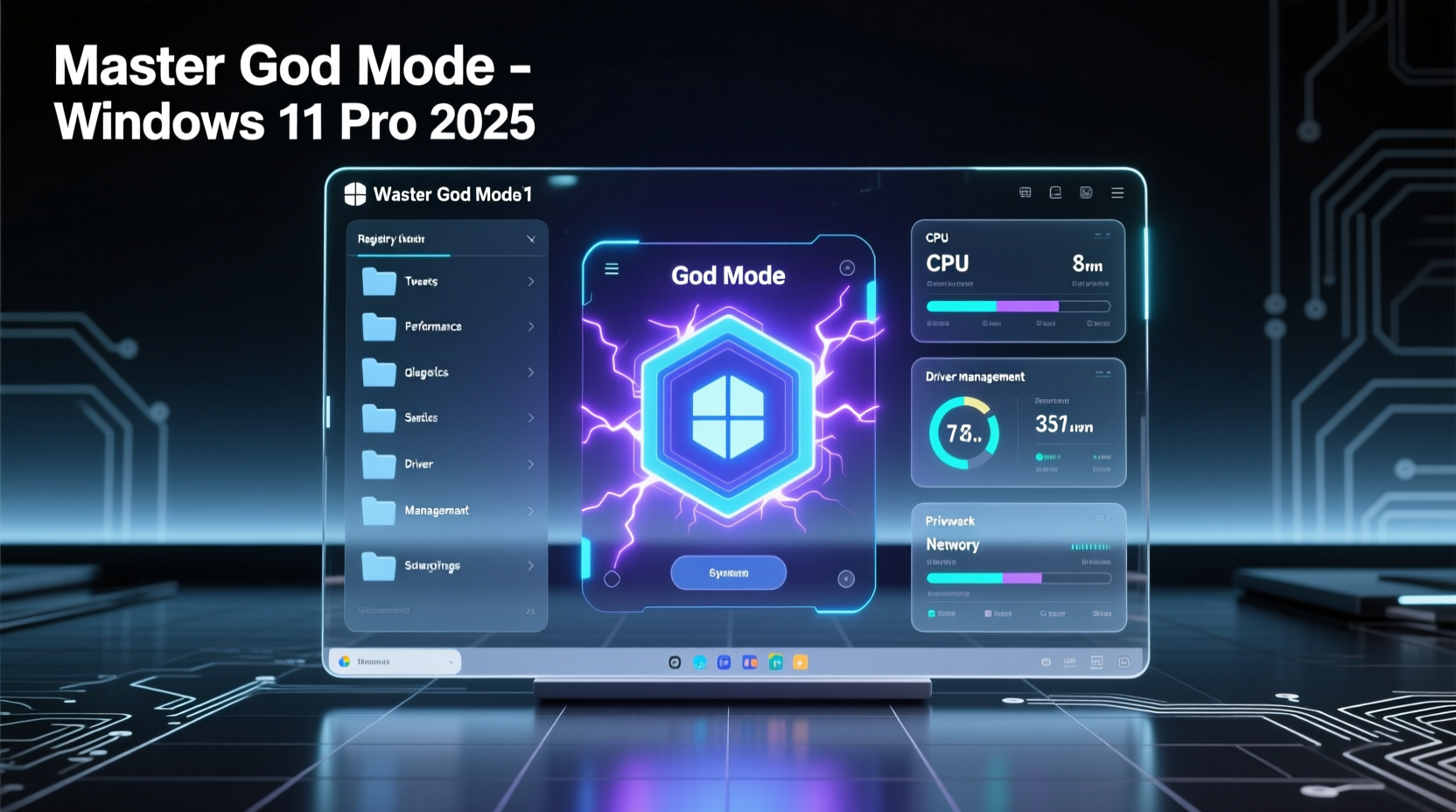Unlocking the Ultimate Windows 11 Experience with God Mode
Accessing all the settings and options in Windows 11 can be challenging, as they are dispersed across various categories in both the Settings app and Control Panel. An option called God Mode simplifies this process by providing a gateway to all the core settings on one screen. By setting up the special God Mode folder, you can view the settings for Backup and Restore, Color Management, Devices and Printers, Ease of Access, File History, Mouse, Power Options, Programs and Features, Security and Maintenance, Speech Recognition, Troubleshooting, User Accounts, and much more.
God Mode is especially useful for advanced Windows users and developers who like to manage and tweak all the intricate details of Windows. But it can also prove beneficial to anyone who wants an array of commands available in one place. Since Microsoft no longer offers a Start menu shortcut for Control Panel, God Mode can be a quick and easy way to access all its core features and applets.
Setting Up God Mode in Windows 11
The process of setting up God Mode is identical in Windows 10 and Windows 11, but let's focus on Windows 11 specifically. Here’s how it works:
Step-by-Step Guide
| Step | Description |
|---|---|
| 1. Check Your Account | Ensure you are signed into your Windows 11 PC with an account that has administrative privileges. By default, your own account should have the necessary rights. To confirm this, navigate to Settings, select the category for Accounts, and check your account to ensure it is designated as Administrator. |
| 2. Create a New Folder | Right-click on any empty area of the desktop. From the pop-up menu, hover over "New" and select "Folder." |
| 3. Rename the New Folder | Right-click on the new folder and rename it to the following string: GodMode.{ED7BA470-8E54-465E-825C-99712043E01C}. Press Enter. |
| 4. Launch the God Mode Window | Double-click the icon, and a window will open with all the available settings. The commands are organized by Control Panel applet, so you can browse through various categories, including Backup and Restore, Devices and Printers, File History, Mouse, Programs and Features, Security and Maintenance, Troubleshooting, and User Accounts. |
| 5. Search for a Command | You can search for a specific command or applet within the God Mode window. Type the keyword or term in the search field to view the related results. |
| 6. Double-Click to Launch | When you see the setting or command you want, simply double-click it to launch. |
| 7. Create a Changeable Icon for God Mode | To create an icon with a viewable name and modifiable image, at the window for creating a new folder, choose the option for a shortcut instead. In the field for "Type the location of the item," enter: explorer shell:::{ED7BA470-8E54-465E-825C-99712043E01C}. Click Next. |
| 8. Name the Shortcut | On the next screen, you can enter any name you wish for the shortcut. Click Finish. |
| 9. Change the Icon | To change the icon from the generic folder image, right-click on it and select Properties. Click the "Change icon" button, and you can select a different icon from the explorer.exe file. You can also search for other executable files with built-in icons and choose one you like. Click OK in the Properties window when done. |
| 10. Launch Your New Icon | Double-click your new icon to see the available commands and settings, then select the one you wish to run. |
Additional Tips and Guidance
Using God Mode is just one of the many ways to enhance your Windows experience. Here are some additional guides and tips to keep your system running smoothly:











 浙公网安备
33010002000092号
浙公网安备
33010002000092号 浙B2-20120091-4
浙B2-20120091-4